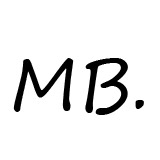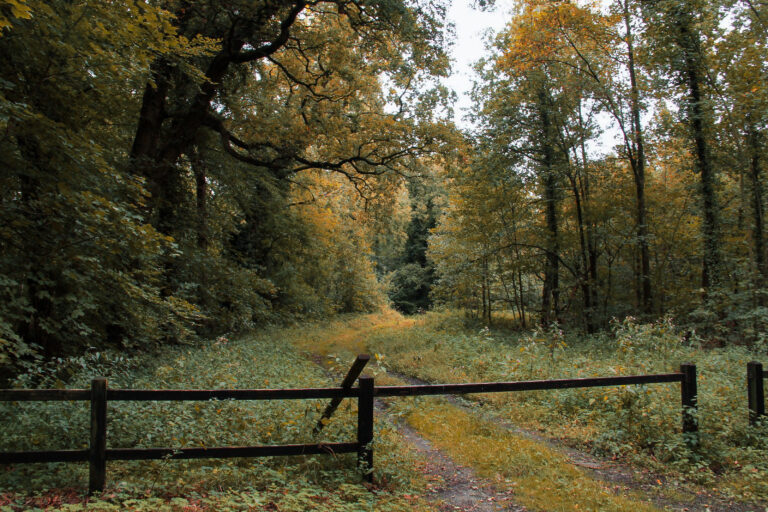In life it’s very easy to get trapped in the hustle culture. I’ve been there too—burning out at 2 AM, convinced that sleeping less meant achieving more. But what if you actually do not need to work eighty hours a week to live a good fulfilling life?
There is this myth that more money is better. But what if enough is the real win? Your true success is often something different than the success of people with millions you look up to. For me, I am happy when I can do things I enjoy, like writing, creating and living peacefully whilst making a living.
That is why this is and has been my goal for a long time. Instead of wanting to make money to buy new things, think of making money as a way to do the things you love. This is what gives you more meaning. When you think of it this way, you do not need millions of dollars, you can look beyond the hustle. You just need a stable monthly income to cover your expenses and create a life that feels right. At least for people just starting out like you and me, that is a way more realistic and enjoyable goal.
The sad thing is that we live in a world of consumerism. We want to buy things we actually do not need, and trade our time for these things. When you think of it on the deepest level, nothing externally can make you fulfilled. You already have everything you need inside of you. Besides that, experience is what gives you more meaning. Having time for friends and family, time to develop yourself and your interests and visiting new places is what makes your life more fun.
“It is not the man who has too little, but the man who craves more, who is poor.” — Seneca

Beyond the Hustle: Why Less Really Is More
When you change your goal from becoming rich to creating freedom, you will start to see that you do not need to be overly productive and on the edge of burnout. You can embrace slow productivity. The thing you do need is persistence and perseverance—but the sustainable kind, not the white-knuckle variety that leaves you depleted.
You will start to see that doing less is the key to accomplish more that matters. You need to eliminate the things that keep you from reaching your freedom, and focus on the things that bring you forward. Rest is very important, because it will give you new inspiration for the things you are working on.
In our society, many people have a wrong image about laziness. We think that if we take the time for ourselves it is selfish, and only permit it when we suffer from physical or mental health problems. But rest is an essential part of our lives, and you should create more rest for yourself, because it will keep you healthy.
Instead of going against the current, try working with your natural rhythms. Take the time to reset yourself when needed, and get some fresh air and take a walk when you need more clarity. The ‘Always On’ Culture is killing your creativity, and you should prioritize your mental and physical health over productivity or financial achievements.
Here’s what this looks like practically: If you’re naturally a morning person, do your most important work before noon instead of forcing evening productivity. If you need a 20-minute walk to think clearly, schedule it like you would any other meeting.
“Nature does not hurry, yet everything is accomplished.” — Lao Tzu
Sustainable Living Design: The 80/20 Principle Applied
In order to live a sustainable life, you need to build a life that does not require recovery. It means that your life is enjoyable and that you have balance. You need to create more alignment with your mission and your values. A way to do this is by following the 80/20 rule of life. Because 80% of your happiness comes from:
- 20% of your activities (maybe writing, creating, deep conversations)
- 20% of your relationships (closest friends and family)
- 20% of your possessions (things you actually use and love)
The same can be said for stress—80% comes from:
- 20% of your commitments (obligations you’ve said yes to reluctantly)
- 20% of your worries (the big ones you ruminate on)
- 20% of your spending (impulse purchases, status items)
Focus on the activities, relationships and things that give your life meaning, and systematically reduce the stress factors. This requires a commitment, but it will be worth it over time.
The same principle applies to your morning routines. There are plenty of books and videos about the perfect morning routine that involves six different activities. But 20% of those activities actually move the needle. Find out what it is that gives you the most energy in the morning and focus on that. To make life less of a hustle, embrace simplicity. Create a morning routine that feels like self-care, not self-torture.
Practical Implementation: Energy Over Time Management
The biggest game changer is energy management instead of time management. There are plenty of planners and to-do lists out there, but you also need to take your energy and mental capacity into account. It is very easy to plan your day full of activities, but you will feel exhausted at the end of the day.
Instead, stick to one or two focus tasks per day, and fill the rest of the day with healing activities, like reading fiction books, walking in nature, practicing mindfulness or any activity that improves your energy. You need to distinguish deep focus tasks from peaceful activities. That way you will get things done, without overwhelming yourself.
Daily Framework:
- Morning: One deep focus task (2-3 hours max)
- Midday: Restorative activity (walk, meditation, light reading)
- Afternoon: Administrative tasks or a second focus period if energy permits
- Evening: Peaceful activities that restore you for tomorrow
Try to create space for spontaneity as well. You cannot plan every part of the day, and going with the flow means that you do not restrict yourself. Sometimes it is good to do something fresh and new. It is good to make plans and have a to-do list, but what’s more important is that you have a couple of focus activities and peaceful activities that bring you closer to your goals.
Every day, try to notice which activities make time disappear, where ideas come easily and energy increases. In order to create flow, focus on those activities and do not put energy into activities where you are forcing, where you notice resistance and everything feels hard.
“Nothing in nature is forced. Water flows, birds fly, flowers bloom. This is also how your best work gets done.” — Jeff Foster
The Hidden Costs of Hustle Culture (And Why the Math Doesn’t Add Up)
We often neglect the problems that can come with being overly productive. The hidden costs include:
Physical toll: Chronic stress, sleep deprivation, weakened immune system, digestive issues Relationship costs: Missing family moments, shallow friendships, constantly being “on” Creative bankruptcy: The elimination of inspiration and original thinking Spiritual disconnect: Losing touch with what actually matters to you
But here’s what I learned the hard way: doing nothing and solely focusing on rest and mindfulness will not bring you further either. I have experienced this period too. I thought that it would solve all of my problems, but in reality, this approach does not work. You need to find a balance between taking action and taking care of your health.
The financial reality check: Many people chase hustle culture because they believe it’s the only path to financial security. But consider this: if you’re spending $50/month on coffee because you’re too tired to make it at home, $200/month on convenience foods because you’re too busy to cook, and throwing money at quick solutions for problems that rest and planning could solve—you might actually need less money when you’re not constantly in crisis mode.
Deep Focus and Inspiration Work
That is why it is so important to have some deep focus activities that build up over time. What you need is to work on projects that come from a source of inspiration, instead of working for the sake of work.
If you have a vision of where you are moving towards, then that means it is worth it. Before you start working hard on something, always ask yourself the question: is this activity in alignment with who I am and what my mission is? Do not get influenced by gurus trying to sell you business models or strategies if they do not align with you, and if you only try to copy them expecting to make money.
Instead, focus on skills that you are naturally good at, like writing, content creation, marketing, sales, web development, or any other skill that creates value. Take your time to learn them, and eventually these skills will stack up. All you need to do is work on projects that are meaningful to you.
“It is not enough to be busy. So are the ants. The question is: what are we busy about?” — Henry David Thoreau
Making the Transition: A 90-Day Roadmap
I want to point out that I am in the middle of this transition as well. I am still on my way to create a life of freedom and alignment. This is my experiment in progress, and I have already learned a lot that makes the journey worth it. Here’s what I’m learning as I build a different kind of life:
Phase 1: Awareness (Days 1-30)
Goal: Get clear on your mission, values, and what you want to create Weekly actions:
- Week 1: Track your energy levels throughout the day. Notice what drains vs. energizes you
- Week 2: Identify your top 3 values and assess how well your current life aligns with them
- Week 3: Define what “enough” looks like for you financially and lifestyle-wise
- Week 4: Start saying no to one commitment that doesn’t align with your values
Phase 2: Experimentation (Days 31-60)
Goal: Test new rhythms and activities Weekly focus:
- Week 5-6: Experiment with different morning routines, keep what energizes you
- Week 7-8: Try the one-focus-task daily structure, adjust as needed
Phase 3: Integration (Days 61-90)
Goal: Refine your sustainable rhythm and make it automatic Weekly refinement:
- Week 9-10: Streamline your processes, eliminate friction
- Week 11-12: Plan your next 90-day phase with lessons learned
Reality check expectations: Don’t expect overnight transformation. In the first 30 days, you might feel resistance or guilt about slowing down. By day 60, you’ll start noticing improved energy and clarity. By day 90, you’ll have a foundation, not a finished system.
Remember to have realistic expectations for each phase. Learn from your setbacks and how you can do things differently the next time. Whenever you have doubts, remind yourself of why you are going on this journey, and how your life could possibly change.
Navigating Social Pressure & Explaining Your Choices
It can be very hard to explain your choices to your social circle. Your family members might say that you are lazy when you want to create the life that feels right, without the hustle and with enough rest and balance. Because everyone around you is still in hustle mode, they might not understand you. But that is fine. You just need to give it some time.
Addressing the financial concerns: If you’re transitioning away from a high-stress, high-income job, acknowledge the financial reality. You might need to build your alternative income stream while keeping your day job initially. Be honest about this timeline—it often takes 1-3 years to fully transition, not 90 days.
It takes years to build up your life’s work and to get momentum. If you still have a day job, try working on your life’s work besides your job, so that over time you will have the life that you desire. Just remember to stay true to yourself, with everything that you do.
The people who support you will remain in your life. Also keep in mind that you do not have to prove anything to anyone. Most resistance comes from love and fear, because they care about you and want the best for you, or they might not believe it is possible to create the life that you want.
Whenever people question your choices, you could say:
- “I’m optimizing for sustainability, not speed”
- “I’m being strategic about my energy, not lazy”
- “This pace helps me do better work long-term”
- “I’m building something that won’t require constant recovery”
The Path Forward
This isn’t about becoming lazy or abandoning ambition. It’s about building a life where your best work emerges from rest, clarity, and alignment rather than stress and force. It’s about creating sustainable success that doesn’t cost you your health, relationships, or sense of self.
The question isn’t whether you can afford to make this transition—it’s whether you can afford not to. Every day spent in unsustainable hustle is a day farther from the life that feels right.
I hope you found this article helpful. We are all on the same quest to find more meaning, alignment and freedom. If you have any questions about this, feel free to ask them in the comments.
If you like this article, also check out “The Courage to Live Authentically in an Inauthentic World.”
Also check out my Youtube Channel Mart Bergsma
I hope you have a fulfilling day,
Mart Bergsma
P.S. Remember: this is a practice, not a destination. Be patient with yourself as you build a life beyond the hustle.







